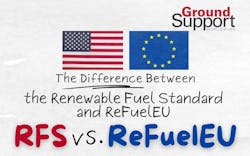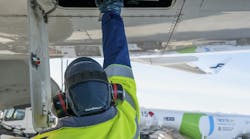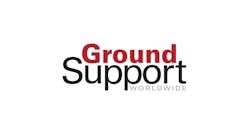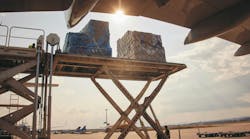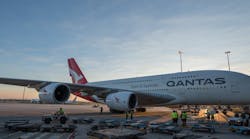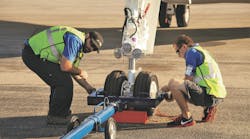Sustainable aviation fuel (SAF) is an important component in the commercial aviation industry’s quest to achieve net-zero carbon emissions by 2050.
SAF is a drop-in replacement for Jet A fuel, which can be created by various feedstocks such as used cooking oils, among others.
According to Pratik Chandhoke, senior manager technical services, renewable aviation, Neste, more SAF is being produced today, due in part to legislation passed in North America and in the European Union (EU).
The EU has devised a sustainability plan, known as the Fit for 55 Package, to reduce greenhouse gas emissions and set climate neutrality goals. As part of this package, aviation goals are outlined in the ReFuelEU initiative to encourage the adoption of SAF. These targets include requirements for airports and fuel suppliers to use sustainable fuels.
ReFuelEU says at least 2 percent of aviation fuel needs to be sustainable starting in 2025. That requirement increases to 6 percent in 2030 and continues to increase every five years until 2050, when a 70 percent green fuel requirement takes effect.
In the United States, the Environmental Protection Agency (EPA) notes the Renewable Fuel Standard (RFS) was designed to produce more renewable fuel to replace or reduce the quantity of petroleum-based fuels, including jet fuel.
“North America and the EU take a different approach,” Chandhoke says. “The U.S. is more focused on this incentive-based system. European countries are more focused on mandates. That’s the key difference between the regulations if you talk about RefuelEU or RFS in the U.S.”
While the two approaches vary, both will result in more production and increased SAF supplies.
ReFuelEU begins with a small mandate, requiring EU airports and fuel suppliers to ensure 2 percent of aviation fuels will be green by 2025.
“Then in 2030, it goes up to 6 percent and then in 2050, it increases to 70 percent of all of jet fuel consumed in the European Union has to be SAF,” Chandhoke adds. “The stepped ramp-up approach is really key to get the supplies online.”
In the United States, the RFS started in the early 2000s as a means to support the farm industry, Chandhoke says. The potential to use feedstocks such as corn and soybeans to produce ethanol and other biodiesel fuel has benefited the SAF industry.
Regulated at the federal level of government, the RFS offers credits for users that utilize renewable fuels.
“The RFS is a stable program that allows (entities) to scale these renewable fuels in the U.S,” Chandhoke says.
Independent of the RFS, the United States’ Inflation Reduction Act (IRA) was signed into law in 2022.
“That increases the credit for SAF,” Chandhoke says.
SAF is more expensive than renewable diesel because it needs to be processed more. The IRA creates additional SAF credits that can be stacked on top of SAF incentives created by the RFS. What’s more, Chandhoke notes state-specific incentives can be added to credits earned through the RFS and IRA.
Currently, IRA credits can apply to imports and local SAF production. However, Chandhoke points out starting in 2025, those credits shift to domestic production only.
“I think we need to be more inclusive, in terms of where this SAF comes from,” he says.
“I think the IRA is a really good start, but we really need to continue to generate policies, especially on the state level in the U.S. to continue to target more states that can release these clean fuel standards,” he continues. “That will allow us to further reduce the price and increase the production and supply of SAF.”
Currently SAF needs government support to continue to grow, Chandhoke explains. However, he notes a switch to SAF production is currently taking place.
“If you look at the EU approach, mandated approach, versus the U.S. approach on incentives and legislation, both do the same,” he says. “They provide the demand, they provide the stability for investments, signal producers to make SAF, and that’s the key to increasing the SAF production globally.”
More on Sustainable Aviation Fuel (SAF)
